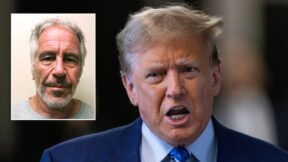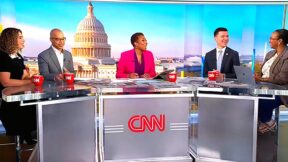Can Larry Ellison and TikTok Rescue the TV Industry?
 Once upon a time, television was the fireplace around which America gathered. Paramount’s movies filled the multiplex, CBS’s anchors narrated history, CNN beamed wars and elections into living rooms.
Once upon a time, television was the fireplace around which America gathered. Paramount’s movies filled the multiplex, CBS’s anchors narrated history, CNN beamed wars and elections into living rooms.
Now the hearth has been replaced by a five-inch rectangle that no one can put down, and the ritual is no longer the shared experience during primetime—it’s an endless scroll of short-form videos. For traditional media, this is the existential problem: the kids are on TikTok, and they’re not coming back for NCIS.
That’s why the whispers about Skydance Media, RedBird Capital, and Larry Ellison feel less like idle deal chatter and more like a fever dream of salvation for a collapsing television industry.
Start with Skydance. Backed by RedBird’s fire hose of capital, the studio run by Ellison’s son, David Ellison, pulled off the improbable and scooped up Paramount Global. That means CBS, CBS News, Paramount Pictures, Nickelodeon, MTV — the cultural wallpaper of the late 20th century — now hangs in his portfolio.
Almost before the ink was dry, insiders reported Skydance might also be eyeing pieces of Warner Bros. Discovery. And in that pile sits CNN. Yes, CNN, battered in the ratings but still the channel world leaders flip on in hotel suites. Owning CNN isn’t about viewers; it’s about influence. You don’t buy it for the advertiser-friendly demos; you buy it for the calls that suddenly get returned on Capitol Hill. Knowing that Jeff Zucker, the former network head who led CNN to the top of the ratings just five years ago, is now part of RedBird and ostensibly involved? Well, that makes this speculation all the more juicier.
Then there’s Larry Ellison. Oracle’s founder, freshly wealthier from a surprise earnings haul, has reportedly emerged as the likely buyer for TikTok, a deal announced by President Donald Trump earlier this week. TikTok isn’t just another social app — it’s the bloodstream of Gen Z, the place where trends are born, elections are memed, and attention is held hostage 15 seconds at a time.
Now picture the synergistic mash-up: CBS and CNN bringing credibility, TikTok delivering the eyeballs, and Skydance stitching it all together with blockbuster IP. Suddenly, the yawning chasm between old media’s fading primetime and new media’s addictive scroll looks less like a death sentence and more like a bridge.
Will it happen? It’s a long shot, at least not in the oversimplified form like I’m imagining here. Deals this big often buckle under debt, regulators, or egos the size of soundstages. Remember AOL-Time Warner? Remember Quibi? History is littered with the headstones of “transformative” visions. But the brilliance here is less about if it happens—it’s that it sketches the only credible way forward to date.
Because the current challenges facing titans of the TV industry are brutal: big-screen content generators are stranded. A summer blockbuster can make a billion dollars, but its cultural half-life is shorter than a TikTok video about a dancing cat. Network news still scores the big interviews, but those clips only matter once they’re diced into something small enough to trend.
There are flies in this particular prescriptive ointment. TikTok has long been a place for the authenticity of user generated content. Highly produced content modules from big networks and studios feel somewhat anathema to what organically makes videos go viral. But just look how reliant late show television shows rely on social media to share sketches and you can see how desperate this massive production efforts are to chase eyeballs glued to smart phones.
The simple fact is that legacy players can’t win on their own terms anymore. And the smart ones have effectively pivoted: Fox Nation was a punchline in media insider circles when it launched six years ago, but now looks more genius with every passing day. TV outlets have never more needed a delivery system into the bloodstream of younger audiences, and right now, that’s TikTok.
That’s why CNN and CBS News are so important in this thought experiment. It’s not about ratings; it’s credible intellectual heft serving as necessary ballast to keep the ship moving forward. It could provide journalistic standards and political legitimacy that balances TikTok’s cultural dominance. One brand gets you in the Oval Office, the other gets you on a teenager’s phone. Combine them and suddenly you’re not just in the media business. You’re in the attention business.
Yes, it’s speculative. Yes, it could collapse under its own ambition. But even as fantasy, the scenario makes something clear: if legacy media is going to survive, it won’t be because CBS revives the sitcom or Warner finds a new Batman. It’ll be because someone figures out how to merge the credibility of the big screen with the gravitational pull of the small one.
If this deal ever happens, it could be the biggest merger of the century. If it doesn’t, it still points to the only path out of the wilderness. Because without a bridge to the smartphone, studios and networks aren’t just diminished — they’re fossils.
This is an opinion piece. The views expressed in this article are those of just the author.




